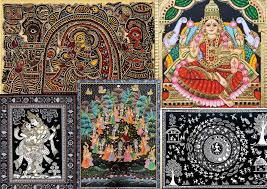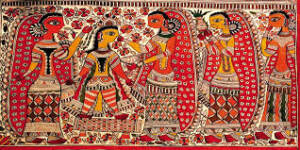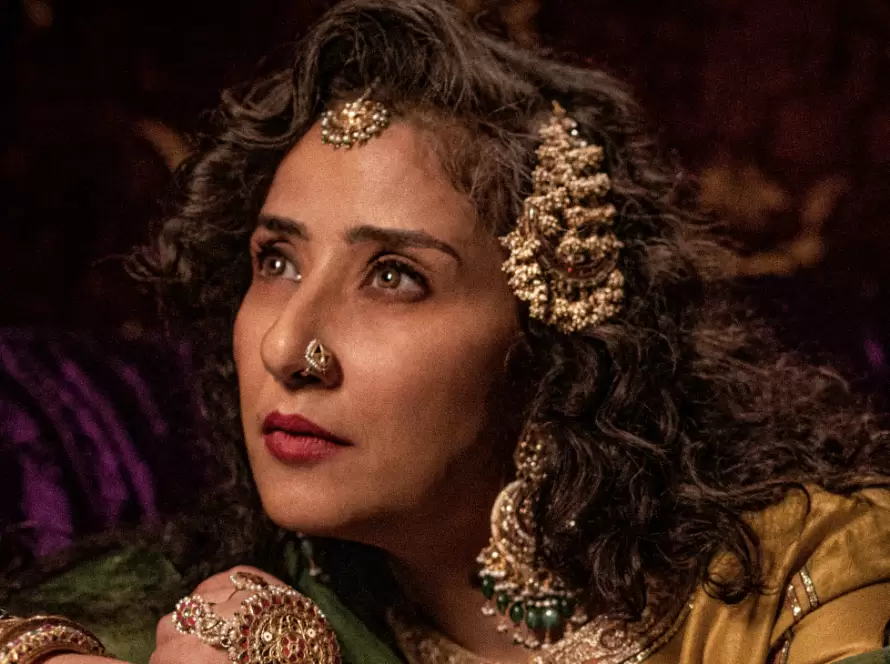Traditional Art Forms Preserved Across India: A Cultural Heritage
India’s rich and diverse cultural heritage is reflected in its traditional art forms, which have been meticulously preserved across generations. From intricate folk paintings to vibrant dance performances, these art forms are not merely expressions of creativity but are deeply rooted in the country’s history, religion, and traditions. As India continues to modernize, preserving these traditional art forms becomes crucial to maintaining a tangible connection to its past. This blog explores some of the most iconic traditional art forms preserved across India, highlighting their significance and ongoing relevance.
RX REJUVENATE, THE BEST SKINCARE CLINIC LOCATED IN NORTH DELHI IS ONE OF THE GREAT SUPPORTER AND FOLLOWER OF INDIAN TRADITIONAL ART FORMS WHICH LEADS THE PATHWAY TO NATION’S EMPOWERMENT AND ENCOURAGING US TO DELIVER MORE EFFICIENT AND TARGETED RESULTS TO OUR CLIENTS.
1. Madhubani Paintings
Originating from the Mithila region of Bihar, Madhubani paintings are renowned for their vibrant colors, intricate patterns, and mythological themes. Traditionally created by women, these paintings are characterized by their use of natural dyes and pigments, with subjects ranging from Hindu deities to nature and folklore.
- Significance: Madhubani paintings are more than just art; they are an integral part of community rituals and celebrations. They often depict religious stories and are used during festivals like Mithila and Diwali. The art form has gained national and international recognition, contributing to the preservation of Mithila culture and traditions.
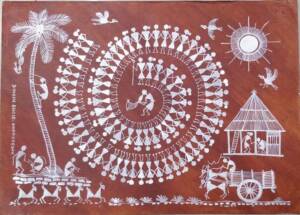 2. Warli Art
2. Warli Art
Warli art, a tribal art form from Maharashtra, is known for its simple yet expressive depiction of daily life and nature using geometric shapes. Created by the Warli tribe, these paintings are traditionally done on mud walls with white rice paste on a brown background.
- Significance: Warli art is deeply intertwined with the tribal communities’ way of life. It reflects their beliefs, customs, and social structure. The art form has evolved from its traditional roots to contemporary contexts, finding its place in modern decor and exhibitions, thus ensuring its survival and relevance.
3. Kalamkari Art
Kalamkari, meaning “pen art,” is a traditional Indian art form from Andhra Pradesh and Telangana. It involves hand-painting or block-printing on fabric using natural dyes. The art often portrays mythological stories and epics like the Ramayana and Mahabharata.
- Significance: Kalamkari art holds significant historical and religious importance, often used in temple decor and traditional clothing. Despite the challenges posed by modernity, efforts are being made to keep this art form alive through workshops and exhibitions, blending traditional techniques with contemporary designs.
4. Pattachitra Paintings
Pattachitra, originating from Odisha and West Bengal, is known for its elaborate mythological narratives and intricate details. These paintings are done on cloth or dried palm leaves using natural colors, and often depict Hindu gods and goddesses.
- Significance: Pattachitra paintings are an essential part of the cultural heritage of Odisha and West Bengal. They are used in religious ceremonies and festivals, such as the Jagannath Rath Yatra. The art form is preserved through dedicated artisans and cultural organizations that continue to promote its heritage and techniques.
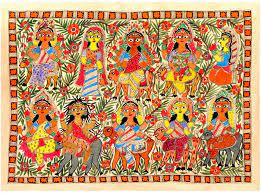 5. Kathakali Dance
5. Kathakali Dance
Kathakali is a classical dance-drama from Kerala, characterized by its elaborate costumes, intricate makeup, and expressive gestures. The dance form combines storytelling with music, offering a dramatic portrayal of Hindu epics and folklore.
- Significance: Kathakali is not just a performance art but a medium of preserving Kerala’s cultural heritage. The meticulous training and the ritualistic performance of Kathakali continue to captivate audiences and uphold the traditions of storytelling through dance.
6. Batik Art
Batik art is a traditional textile art form known for its wax-resist dyeing technique, practiced primarily in the regions of Madhya Pradesh and Tamil Nadu. The process involves applying wax to fabric before dyeing it, creating intricate patterns and designs.
- Significance: Batik art reflects the cultural diversity of India through its vibrant patterns and colors. It is used in clothing, accessories, and home decor. The resurgence of interest in traditional textiles has led to renewed efforts to preserve and promote Batik art, ensuring its continued relevance in contemporary fashion.
7. Gond Art
Gond art, originating from the Gond tribal community in Madhya Pradesh, is characterized by its intricate patterns and vibrant colors. The art form uses dots and lines to create detailed depictions of nature, animals, and mythological creatures.
- Significance: Gond art is a visual representation of the Gond tribe’s connection with nature and their spiritual beliefs. It has gained popularity beyond its traditional boundaries, with exhibitions and art galleries showcasing Gond art and encouraging new generations to engage with this unique cultural expression.
8. Sanjhi Art
Sanjhi is a traditional form of paper-cutting art from Uttar Pradesh, used in religious decorations and rituals. This delicate art involves cutting intricate designs into paper, which are then used to create beautiful patterns for festive occasions.
- Significance: Sanjhi art holds a special place in Hindu religious practices and festivals. Its preservation involves passing down techniques through families and communities, ensuring that this art form continues to be a part of religious and cultural celebrations.
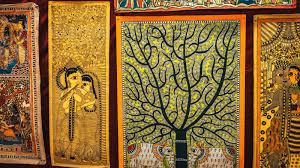 Conclusion
Conclusion
Traditional art forms in India represent more than just artistic expression; they embody the country’s rich cultural heritage and history. From the vibrant colors of Madhubani paintings to the rhythmic movements of Kathakali, these art forms offer a glimpse into India’s diverse traditions and values. Preserving these art forms requires not only maintaining traditional techniques but also adapting them to contemporary contexts, ensuring their relevance for future generations.
As India continues to navigate the complexities of modernization and globalization, it is essential to cherish and promote these traditional art forms. By supporting artisans, participating in cultural events, and integrating traditional art into modern life, we can contribute to the preservation of India’s invaluable artistic heritage.
